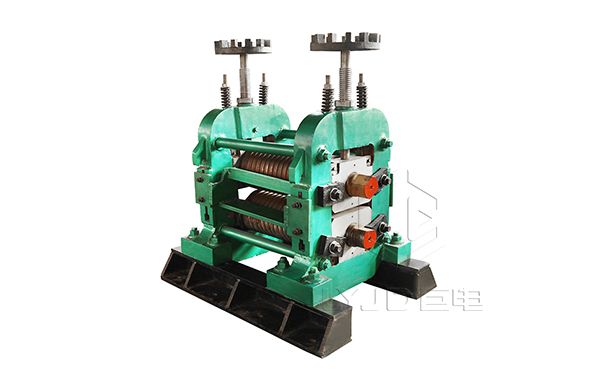A roughing stand in a rolling mill is a section of the mill where the initial shaping of metal occurs. The primary purpose of the roughing stand is to reduce the thickness of the metal and convert it into a more manageable form for further processing. It is typically the first stand in a rolling mill sequence.
In the roughing stand, the metal, usually a large rectangular slab or billet, is passed through a pair of large rolls that exert high compressive forces on the material. The rolls have grooves or pass designs that are designed to achieve the desired reduction in thickness. As the metal passes through the roll gap, it is squeezed and elongated, reducing its thickness.

The primary objective of the roughing stand is to reduce the thickness of the metal. The reduction in thickness is achieved by applying high compressive forces to the metal as it passes between the rolls. The rolls in the roughing stand are often larger in diameter compared to the subsequent stands, allowing for a greater reduction in thickness.
Rolling metal generates a significant amount of heat due to the friction between the metal and the rolls. In the roughing stand, measures are taken to control the temperature of the metal. This can include the use of coolant sprays or water jets directed at the rolls and the metal to dissipate heat and prevent excessive temperature rise.
The rolls in the roughing stand are designed to accommodate the high forces and stresses involved in the rolling process. They are typically made of durable materials such as forged steel or cast iron, and they may have specific surface patterns or grooves to facilitate the deformation of the metal. The roll gap, which is the distance between the rolls, is set to achieve the desired reduction in thickness.
Due to the high rolling forces in the roughing stand, powerful drive systems are required to rotate the rolls. Electric motors, often with high horsepower ratings, are used to drive the rolls through gears or other transmission systems. The drive system must have sufficient torque and speed control to handle the load and ensure precise rolling.
The roughing stand is typically part of a more extensive rolling mill system. The exact configuration of the mill can vary depending on the specific application and the type of metal being processed. A rolling mill may consist of multiple stands arranged in series, with each stand designed for a particular reduction in thickness. The metal passes through each stand successively until the final desired dimensions are achieved.
The roughing stand sets the stage for subsequent rolling operations. It prepares the metal for further shaping and refinement in the intermediate and finishing stands. The reduction in thickness achieved in the roughing stand also helps to break down the coarse grain structure of the metal, leading to improved mechanical properties and surface quality in the final product.
Overall, the roughing stand plays a crucial role in the rolling mill process by initiating the reduction in thickness and preparing the metal for subsequent processing. It requires robust construction, efficient cooling systems, and powerful drives to withstand the high forces involved.
Please send us your request and we reply to you with in 24 hours.
Submit Request